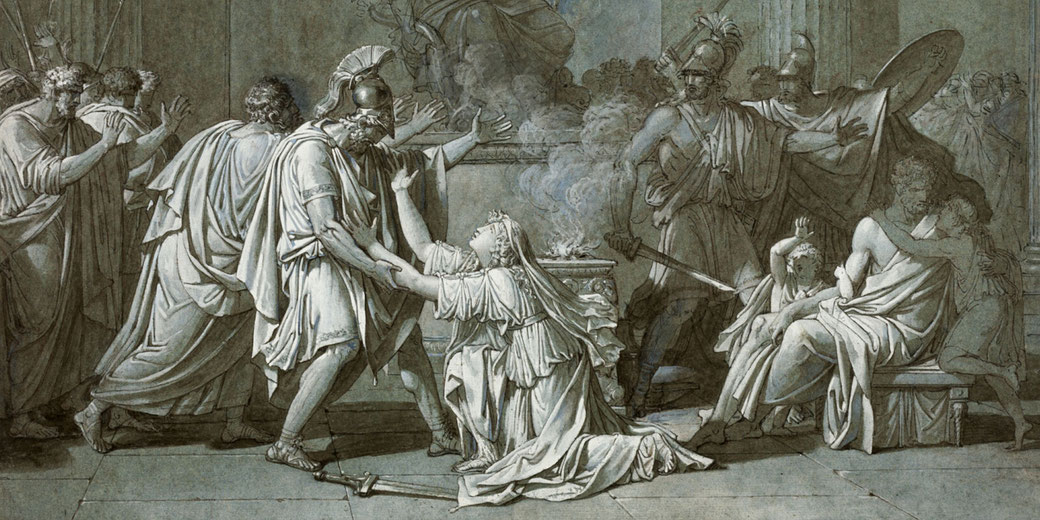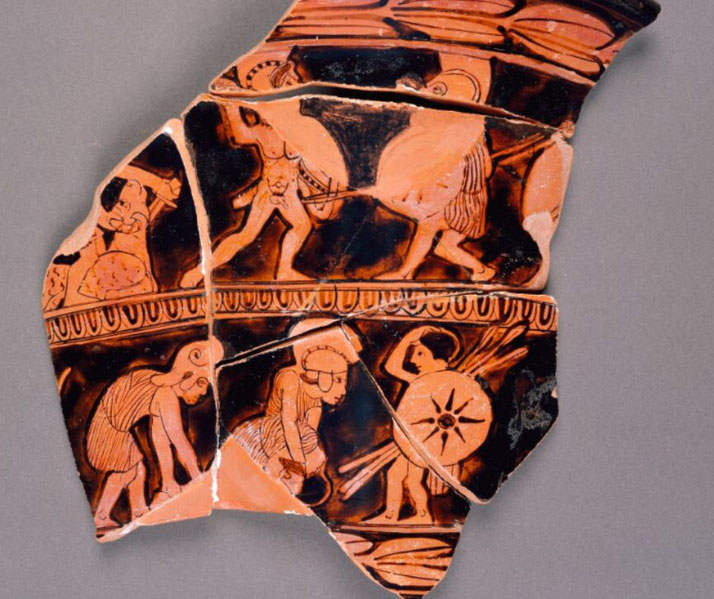Who was Leonidas, the legendary Spartan king who died at Thermopylae?

During the summer of 480 BCE, a Persian army crossed into mainland Greece under the command of King Xerxes I. At the narrow coastal pass of Thermopylae, a Greek force of about 7,000 troops from various city-states that blocked their advance under the leadership of a Spartan king named Leonidas.
His decision to fight and die rather than retreat became a widely told, long-standing story of ancient warfare, although the true details reveal far more than patriotic legend.
The story of Leonidas' childhood
Around 540 BCE, though some scholars suggest slightly later dates, Leonidas was probably born into the Agiad dynasty of Sparta, a royal family that claimed descent from the mythical hero Heracles and held one of Sparta’s two kingships.
His father was Anaxandridas II, who ruled during a period of relative stability, but Leonidas did not stand first in line for the throne.
His older half-brother, Cleomenes I, inherited the kingship, which meant that Leonidas spent his early life outside the direct line of succession.
Like all Spartan boys, Leonidas typically entered the agōgē at the age of seven, where he underwent rigorous physical and mental training designed to teach obedience, build his toughness and develop his fighting skill.
As part of this system, boys received limited food, endured harsh discipline, and lived under close supervision.
Unlike aristocratic sons in other Greek cities, Spartan royals trained alongside commoners to reinforce the value of equality among warriors and to test their endurance under identical conditions.
Later, as a young adult, Leonidas joined a syssition, which was a required mess group where Spartan men dined, trained and built bonds of loyalty that extended into the battlefield.
These daily routines mainly promoted unity over individual privilege and prepared Spartan citizens for collective warfare.
After the death of Cleomenes in 490 BCE, Leonidas became king, probably because his elder brothers had either died or had failed to produce heirs.
Since, by completing the agōgē, he held full citizen status among the homoioi, who were Sparta’s elite warrior class.

Leonidas as a Spartan king
Sparta’s dual kingship ensured that Leonidas shared power with Leotychidas of the Eurypontid line, although both kings generally remained subject to the authority of ephors, the gerousia and the apella.
Leotychidas had only recently succeeded to his line, and the two men ruled concurrently for several years.
The Spartan constitution limited royal power, which required the kings to consult religious oracles in order to obey customary law and to accept oversight by annually elected magistrates.
Importantly, kings held command of the army in wartime and performed key religious duties.
By all accounts, Leonidas ruled during a time of rising external threats. After the Persian defeat at Marathon in 490 BCE, Xerxes began to prepare a massive land and sea invasion to subjugate all of Greece.
By 481 BCE, Leonidas had accepted the role of military commander of the Hellenic League’s land forces.
This alliance of Greek city-states included Athens, Corinth, Aegina, and others who agreed to cooperate against the Persian invasion.
Leonidas’ leadership required diplomacy as well as discipline, since each member of the league retained its own government and military traditions.
Sparta's role in the Greco-Persian Wars
Sparta’s military strength depended on its hoplites: heavily armoured infantry who fought in tight phalanx formations that used large round shields, long spears and short swords.
Their training, discipline, and unity gave Sparta its reputation for battlefield excellence.
However, the city remained cautious about the deployment of large forces outside the Peloponnese unless the region faced a direct threat or ritual law allowed it.
Early in 480 BCE, Persian forces crossed the Hellespont and began to advance through Thrace and Thessaly.
Greek leaders met at Corinth and agreed on joint action, eventually settling on Thermopylae as the best defensive position.
The terrain forced the attackers into a narrow corridor, which reduced the effectiveness of cavalry and missile troops.
Leonidas volunteered to lead the advance force because Sparta’s full army could not march until after the Karneia religious festival, which prohibited military action unless the city was under direct threat.
To compensate, he chose 300 elite Spartans, according to later accounts, all of whom had fathered sons to carry on their names, and assembled a few thousand allied troops from central and southern Greece.
Leonidas had led the allied land force to occupy the pass before the Persians arrived, while the Athenian-led navy took position off the nearby coast.
He had fortified the existing wall across the pass, had organised the units from various cities and had prepared for a defensive stand that relied on holding the line for as long as possible.
Among the units were troops from Mantinea, Tegea, Phlius, Arcadia, Locris, and Phocis, which showed the range of the Hellenic League.
Soon, Persian scouts reported the Greek position to Xerxes, who expected them to flee.
Instead, Leonidas’ men stood their ground. The Greeks rejected demands to surrender and prepared to face a force that Herodotus claimed numbered over two million men, although modern estimates usually range from 70,000 to 300,000.
The Persian army included units from across the empire, such as Medes, Egyptians, Bactrians, and Saka, which made it vast but uneven in quality and language.
Leonidas at the Battle of Thermopylae
On the first day of battle, waves of Persian infantry attacked the Greek position but failed to break the line because the phalanx formation, combined with the narrowness of the terrain, prevented the Persians from making full use of their numbers.
Greek warriors used their long spears to maintain distance and killed attackers in front of the wall with disciplined thrusts and shield formations.
By the second day, Xerxes sent his Immortals, an elite unit within his army, to penetrate the defence, but their efforts also failed because the Greeks rotated their front line and fought with well-practised skill.
Persian losses grew, while the Greek losses remained relatively low due to the terrain and formation tactics.
Eventually, a local Greek named Ephialtes revealed a mountain path to the Persians that allowed them to bypass the main position, so the Persians used this route to begin encircling the defenders.
When Leonidas had received word of this development, he held a council and decided to release the majority of the allied troops so they could retreat and regroup.
Significantly, he and his 300 Spartans chose to remain, joined by 700 Thespians under the command of Demophilus, who refused to abandon the fight.
Some Thebans also stayed, though their loyalty has been debated, as Herodotus suggested they surrendered once surrounded.
Leonidas’ choice aimed to inspire the rest of Greece by example. A Delphic prophecy had foretold that either Sparta would fall or one of its kings must die, which likely reinforced his resolve to stand.

The legendary account of Leonidas' death
At dawn on the third day, Leonidas launched a counterattack. His men fought with broken spears, short swords, and bare hands when necessary.
The Persians attacked from both front and rear and they used overwhelming numbers to grind down the defenders.
Herodotus later claimed that the Spartans had retrieved the body of Leonidas after he fell and fought to protect it from capture, but eventually the survivors became surrounded and fought until death.
Xerxes, infuriated by the delay and the casualties, ordered Leonidas' corpse to be mutilated.
His head was cut off and his body crucified, which showed the king's desire to punish defiance and erase the symbolic power of Leonidas' sacrifice.
Years later, the Spartans returned to recover his remains and they buried him in Sparta, near the theatre, where he became the focus of annual commemorations, athletic contests and public rituals.
The problematic nature of the historical account
Much of what survives about Leonidas comes from Herodotus, who had completed his Histories around the middle of the fifth century BCE.
His work preserved key details such as names, speeches and battle outcomes, but he often relied on second-hand accounts, dramatic invention and storytelling techniques.
He described dreams and omens using a storytelling style and presented last words as stories with weak support instead of solid evidence.
However, no Persian records from the period mention Leonidas or Thermopylae, which leaves historians dependent on Greek sources.
Later writers expanded the tale, turning it into a moral story about liberty and resistance.
Memorials at Thermopylae, which included the famed inscription “Go tell the Spartans…”.
To modern scholars, the battle of Thermopylae and Leonidas’ death carries more symbolic importance than military consequence.
His decision to remain in the pass influenced Greek morale and gave Athens time to prepare for future battles such as Salamis.
However, the story that has survived blends fact with invention, leaving behind a figure who belonged as much to legend as to historical record.
What do you need help with?
Download ready-to-use digital learning resources
Copyright © History Skills 2014-2025.
Contact via email
With the exception of links to external sites, some historical sources and extracts from specific publications, all content on this website is copyrighted by History Skills. This content may not be copied, republished or redistributed without written permission from the website creator. Please use the Contact page to obtain relevant permission.





